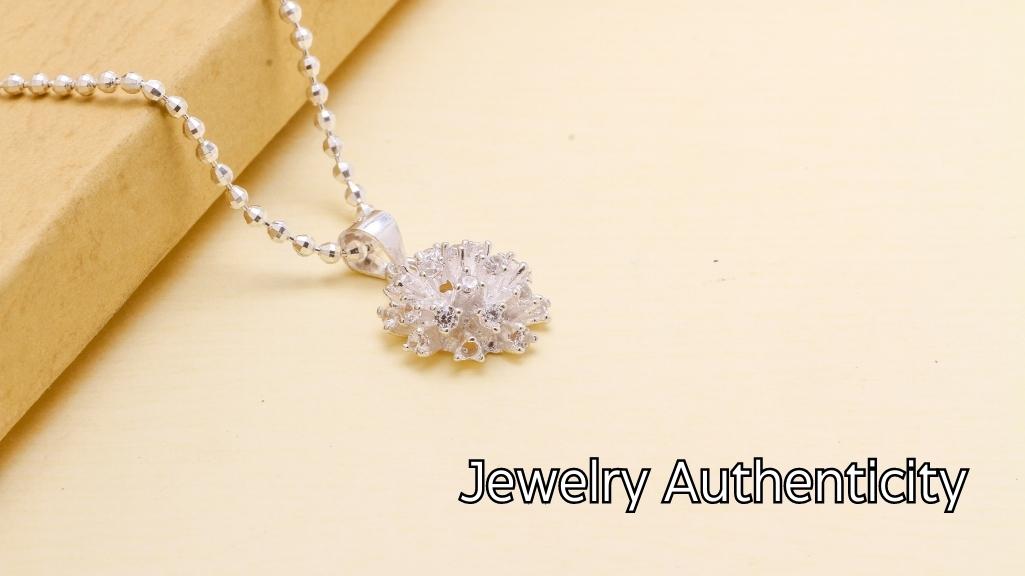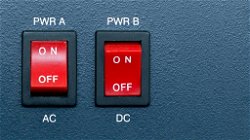Cracking the Code of Jewelry Authenticity
Poonam Junjunwala
. 4 min read
It might be difficult to determine whether or not an item of jewellery is genuine, so we've provided 12 easy methods to tell the difference. The saturating state of the market is well known. It's one thing to purchase costume jewellery at a rock-bottom price, knowing full well that you're not getting the genuine stuff. The issue arises, though, when the buyer believes they are receiving a genuine diamond ring. By leveraging the convenience of cam chat, you can access professional expertise from the comfort of your own home, ensuring a more informed and confident decision when investing in valuable jewellery.

Metal Testing and Gemstone Verification Techniques Online
Several of these techniques may also be used at home to verify the authenticity of your jewellery
There, before parting with your cash, at the shop itself. Keep in mind that we have a lot more helpful tips and enlightening information like this on the bright side of life, so be sure to subscribe and ring that bell to be alerted of each and every daily updates. So, let's start with metals; there are various methods to tell whether the precious metal in an item is genuine or if you've been duped into purchasing a fake.
A hallmark reading of "925" indicates that the purity of the metal used in the item of jewellery is 92.5 percent
In today's digital age, it's a breeze to learn what hallmarks are usual for various metals. If you want to verify the accuracy of the engraving on your, all you have to do is check it against the data available online. Check the actual numbers on your jewellery purchase. They ought to be straightforward and accurate. If they aren't, then you know you're not being ripped off. You may identify these valuable metals by their hallmarks, which are described below. Target: 375058035835807509169958099808silver808.
Such an alluring answer! 387592609999 Platinum 8590959999 Number 2 a Magnet
You may use this technique to check the authenticity of jewellery you currently own, as well as jewellery you want to purchase. Bring a magnet with you to the jewellery store. The problem is that there are more impurities in imitation jewellery. Iron, albeit not as pure as pure iron, is nevertheless magnetic. A magnet will not attract a real piece of jewellery that has a significant percentage of precious metal.
Specifically, the third one got broken
As platinum and silver are so visually similar, the less costly 1A fake manufactured of silver may be easily substituted for the more valuable platinum. Its blackish colour and increased adaptability will be dead giveaways. Platinum, however, does not have these characteristics. It is possible to see traces of the precious metal on porcelain and ceramic surfaces that have not been fired or glazed.
This means you may resort to the more obscure techniques, such as the magnet test
Several compositions may be used to test the authenticity of jewellery you already own or are considering purchasing. Try some number four chalk, for instance. Use chalk for a quick and easy silver quality check. If it becomes darker when rubbed with chalk, then you know it's authentic 5 iodine. Iodine is used for testing gold. If the object retains any colour after the test, it is either a fake or contains very little precious metal 6 vinegar.
The vinegar test is another method used to authenticate gold
To rapidly darken gold, pour some vinegar into a glass and let the jewellery soak for around 5 minutes. Of course, unless the shop permits it, you probably won't be able to employ this strategy immediately. You tell the salesman you're going to lunch and bring in a huge salad. Then, you accidentally toss the salad with the gold and have to spend a long time digging it out.
Oops, my bad, sulphur is the seventh
The same ointment that has been used for years to treat acne may also be used to verify the authenticity of silver. In the case of genuine silver, the area slathered with the ointment will become a deep blue; this is nothing to be alarmed about. If your jewellery becomes tarnished in this manner, don't worry—the stain may be scrubbed off. In order to determine whether the platinum you have in your possession is genuine, you may use the eight ammonia now ammonia test.
What's more, if you're a courageous person?
It's possible to do a crash test like this. Light the stone, wait 30 seconds, and then place it in cold water. If the stone is made of glass or quartz, it will break inside owing to the sudden drop in temperature, but a genuine diamond will remain unharmed. These gems have a well-earned reputation for their durability. If you want to know whether an emerald is real, look at its gym, which is ten emeralds presently. Real emeralds do not feature internal tubular or spiral patterns when seen via a microscope.
I'm afraid I can't be of much assistance here
You may be certain that the gem you have is a genuine emerald if it does not emit any fluorescent light. Take it to the magician in Emerald City if nothing else helps. The only thing Oz is knowledgeable about is emeralds; he lacks both guts and intelligence. Because real pearls are so pricey, it's unreasonable to assume that anything cheap must be fake. It will be sufficient to inspect a Pearl with your teeth to confirm its genuineness.
Natural pearls don't act in this way, but cultured ones do
Alternatively you may throw the baby with the bathwater. If they don't care, then it must be phoney, right? Really, that's something I made up. It makes perfect sense, too. You're not Shirley 12 Amber, I'm sure of it. Drop some amber into some salt water. A total of three teaspoons of salt should do the trick. Anything composed of glass, plastic, or the faux amber epoxy resin creates will all sink immediately.
Conclusion
To conclude, when it comes to determining the authenticity of jewellery, there are several easy methods that can be employed. It's important to be vigilant, especially when shopping online or in a saturated market, to avoid being duped into purchasing fake jewellery at the price of genuine pieces. Some of the techniques mentioned in this article, such as checking hallmarks, using magnets, employing tests with chalk, iodine, vinegar, ointment, and ammonia, can be done at home or in the store before making a purchase. Additionally, specific tests for gemstones like diamonds and emeralds can also be conducted to verify their authenticity.
More Stories from
The Mysteries of the Brain: Recent Discoveries in Neuroscience
From the brain's remarkable adaptability to the profound link between the gut and brain, explore the cutting-edge findings shaping our understanding of cognition and behavior.
The Science of Happiness: Exploring Factors and Cultivating a Happier Life
This article explores the fascinating science of happiness, delving into the factors that contribute to our well-being.
Understanding AC and DC: The Fundamentals of Electric Power
This article provides a concise overview of Alternating Current (AC) and Direct Current (DC), the two fundamental types of electrical power.
Defense Advanced Research Projects Agency (DARPA): Pioneering Innovation in Defense Technology
This article provides a concise overview of the Defense Advanced Research Projects Agency (DARPA), its mission, and its key contributions to revolutionizing defense technology.
A Look into the Ethical Dilemmas of Biotechnology and Genetic Engineering
This article delves into the ethical dilemmas arising from biotechnology and genetic engineering. It explores the complex issues surrounding genetic editing, GMOs, gene patenting, informed consent, and reproductive technologies.






.png?width=40&aspect_ratio=1:1)

.png?width=40&aspect_ratio=1:1)




